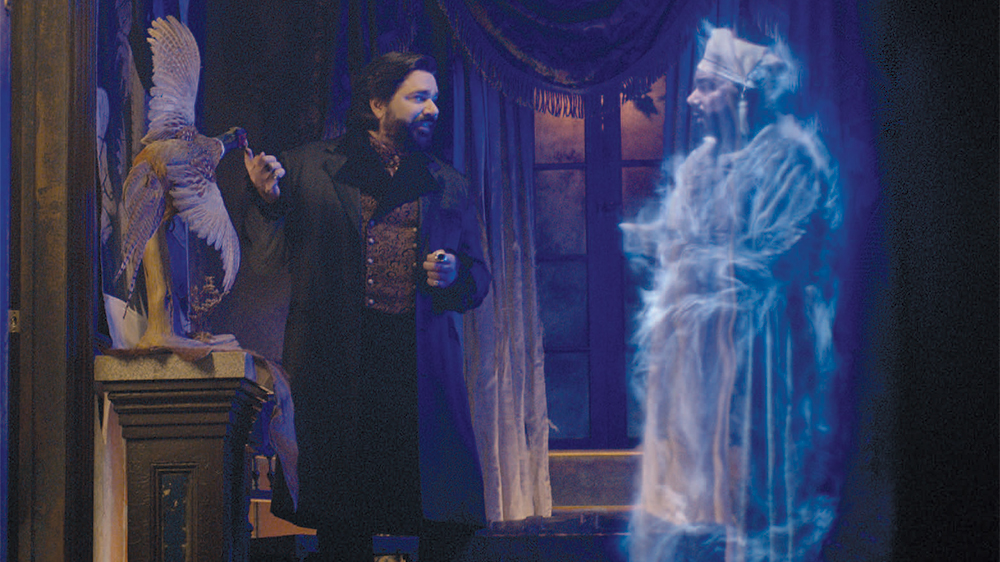‘What We Do in the Shadows’ Cinematographer Used Varied Lighting Technologies to Up the Stakes
By Jazz Tangcay
LOS ANGELES (Variety.com) – Lighting was a key partof the second season of Jemaine Clement’s mockumentary series “What We Do in the Shadows,” about a pack of vampires on Staten Island, which returned April 15 via FX, and airs on Hulu the following day.
Cinematographer D.J. Stipsen shot most of the show’s first season as well as the 2014 film on which the series is based. He knew that the second episode of Season 2, which features a ghost infestation in which the spirits have a glowing, spectral appearance, would require additional illumination. By chance, CG supervisor Leo Bovell had stumbled across a behind-the-scenes photo from “Ghostbusters” of an actor wearing an LED suit, which led to the use of Astera lighting tubes that were sewn into the costumes and easily controlled by board operators to provide the effects required.
The Astera tubes came in particularly handy in Episode 3 as well, when the vampire’s familiar Guillermo (Harvey Guillén) seeks virgins to sacrifice. His search leads him to a meeting of vampire hunters set under a church. Stipsen had suggested lighting the set in red; director Kyle Newacheck and the production team agreed. “I thought the red lighting concept would be fun, and an ode to ‘The Hunt for Red October’ because that’s what these guys are doing — hunting,” he says. “But I said we can’t just try it; you have to commit every take to have red light.”
Without the Astera tubes, which can also be used for lighting objects, Stipsen would have had to rewire the entire building and run red LED lights throughout. “Timing was the most crucial aspect,” Stipsen says, since lighting changes needed to sync with the actors. Still, he says, despite red being the dominant color when the vampire hunters meet, he still ran a single fluorescent light so as not to bathe the entire scene in a sea of crimson.
Liza Johnson stepped in to direct Episode 4, “The Curse,” in which the vampire hunter from the previous episode descends on our antiheroes’ lair. The visual conceit was to go back to the scare-factor aesthetic of the film. Stipsen looked at different ways of lighting the interiors to deliver the needed shocks, and decided on infrared technology.
“But we couldn’t get night vision cameras used by the military into Canada,” the DP says of the Toronto-shot series. “So I found a domestic Sony camera with a night setting.”
The payoff sees vampire hunters fully geared with helmet cameras charging into the house for their prey. Costume designer Amanda Neale’s concept was to bolt lights onto bike helmets to provide the effects Stipsen and Johnson were looking for, illuminating each POV shot with just the helmet lights as the hunters run — and then switching to infrared night vision for an objective angle.
Stipsen adds that during the scene, he and the crew sat listening from a ballroom, with the hunters instructed to dash through the house looking for hidden vampires, a conceit designed to create takes that play up the show’s mockumentary style and capture genuine fright. Johnson got the footage she needed from the helmet cameras. Stipsen says, laughing, “You can hear all the actors screaming and running, and by the end of the scene they all came running back into the ballroom saying they had never been so scared in their lives.”

